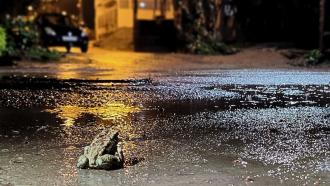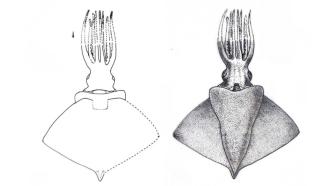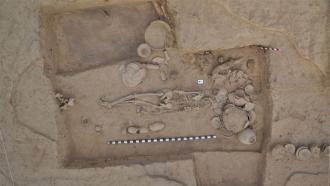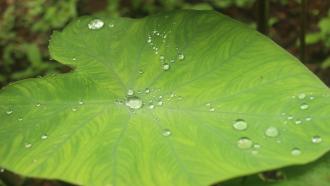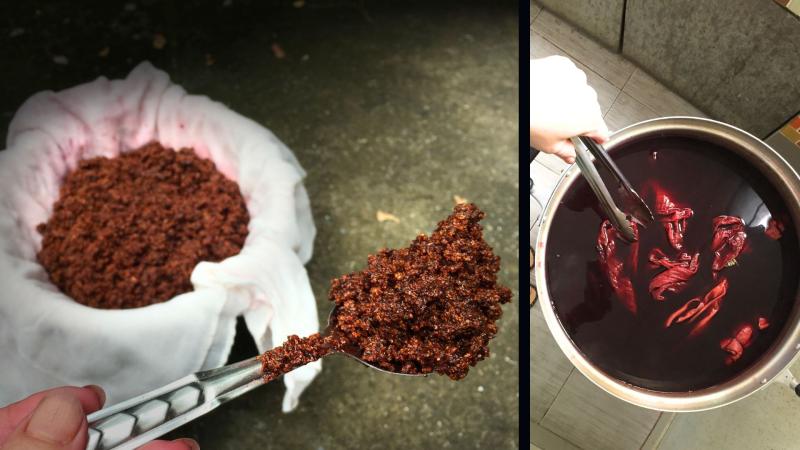
For centuries, a deep red dye, known as lac dye, has been harvested from tiny insects called lac insects. The dye is the resinous secretion of several species of lac insects, of which the most commonly cultivated is Kerria lacca. The dye was used in ancient India and neighbouring areas as a wood finish, skin cosmetics, lacquerware and dye for wool and silk. India exported significant amounts of lac dye from the 1700s to the late 1800s and remains the leading producer of lac, with Jharkhand, followed by Chhattisgarh, West Bengal, and Maharashtra being leading producers. However, despite using the dye for a long time, the true origin of this brilliant crimson colour remained a puzzle.
Now, a study from the Indian Institute of Science, Bengaluru, may have finally answered this century-old question. It reveals that the lac insect's vibrant hue isn't its own creation but rather that of an unexpected microscopic guest living inside it: a yeast-like fungus.
Did You Know? The word lac is derived from the Sanskrit word lākshā '(लाक्षा), representing the number 100 thousand, which was used for both the lac insect (because of their enormous number) and the scarlet resinous secretion it produces. The lac insect is also famous for producing shellac, a natural resin. |
Scientists have long known that the lac insect, Kerria lacca, a small, phloem-feeding scale insect, produce these striking red pigments called laccaic acids. These pigments are part of a larger family of compounds called polyketides, which are complex organic molecules often made by bacteria, fungi, and plants but rarely by insects themselves. This naturally led to the question: if the insects don't usually make these, where did the lac insect get its colour? The laccaic acids are also manufactured using an amino acid called tyrosine. Again, insects typically don't synthesise tyrosine from scratch. This led researchers to suspect that something else was at play.
To explore this question, the research team started with the fundamental biological blueprint: the genome. They sequenced the entire genetic code of the lac insect, along with its known internal companions: a common bacterial symbiont called Wolbachia and a previously unidentified yeast-like symbiont, which they named Kerria lacca yeast-like symbiont (KLYLS).
They found that neither the lac insect's own genome nor the Wolbachia bacterium contained the genetic instructions needed to produce the complex polyketide backbone of laccaic acids. However, when they examined the KLYLS genome, they discovered a specific gene cluster for a type of enzyme known as a non-reducing polyketide synthase (NR-PKS). These are the molecular architects that build the complex polyketide structures. This was a significant breakthrough, as functional PKSs had never been identified in insects before for producing aromatic polyketides.
Next was the tyrosine, the amino acid that attaches to the polyketide backbone. Again, the insect and Wolbachia genomes came up empty-handed for the pathway to synthesise tyrosine from scratch. However, the KLYLS genome contained all the necessary genes for the complete tyrosine biosynthesis pathway. This confirmed KLYLS as the sole source for both major components of the lac pigments.
To further confirm their findings, the scientists treated some lac insects with a fungicide, a chemical that explicitly targets fungi. If KLYLS was responsible for the pigment, then reducing the amount of KLYLS should also reduce the pigment. And that's exactly what happened. The fungicide-treated insects had significantly lower amounts of KLYLS, and consequently, their bodies contained much less laccaic acid and tyrosine. Visually, these insects even appeared paler than the untreated control group.
The fungicide-treated insects were also noticeably smaller and lighter, suggesting that KLYLS wasn't just a pigment producer but also provided essential nutrients that the lac insect couldn't get from its phloem-based diet – plant sap is notoriously low in specific amino acids and vitamins). This confirmed a mutualistic relationship: the fungus receives a safe home and the insect benefits from its vibrant colour and vital nutrients.
The researchers also note that the fungicide treatment didn't completely eliminate KLYLS, meaning the treated insects still produced some pigment and survived, albeit suboptimally. This suggests the fungus is incredibly integrated into the insect's life.
This research may have finally answered a long-standing mystery of the lac insect's incredible scarlet colour and significantly advances our understanding of the lac insect's biology. While previous studies had hinted at the presence of yeast-like symbionts in lac insects, their specific role in pigment synthesis and nutrient provisioning was undetermined. This work definitively points to KLYLS as the key player.
Beyond the fascinating biology, the research highlights the power of symbiotic relationships in nature, demonstrating how organisms outsource specific biological processes to microbial partners. Symbiotic relationships have led to significant evolutionary leaps, such as the mitochondria within our cells, which are believed to have originated from a free-floating microbe in the past. This study reminds us that the natural world is full of hidden collaborations.
This article was written with the help of generative AI and edited by an editor at Research Matters.

